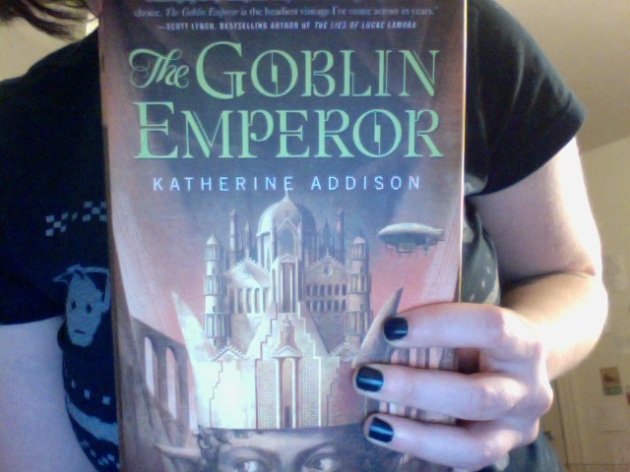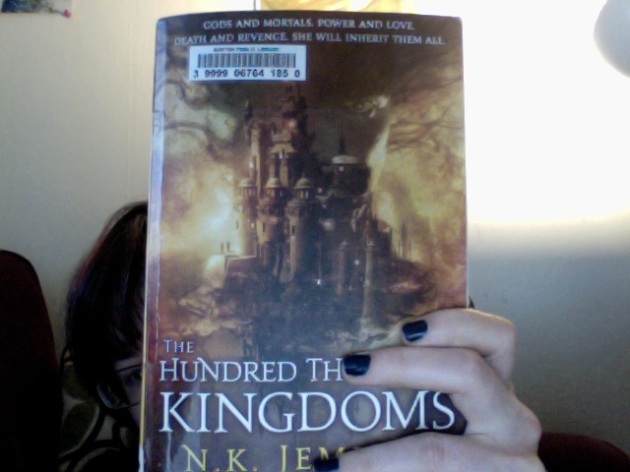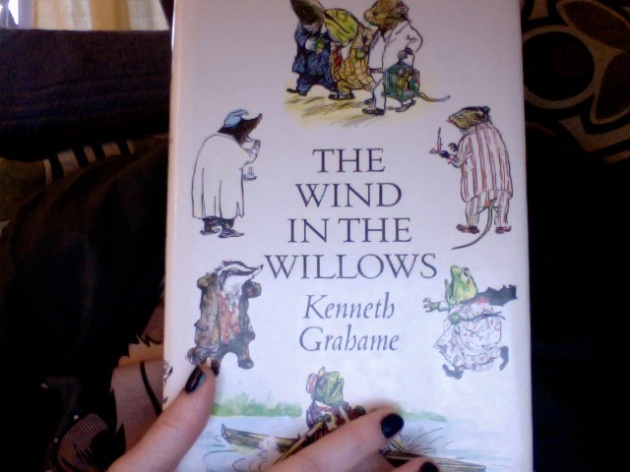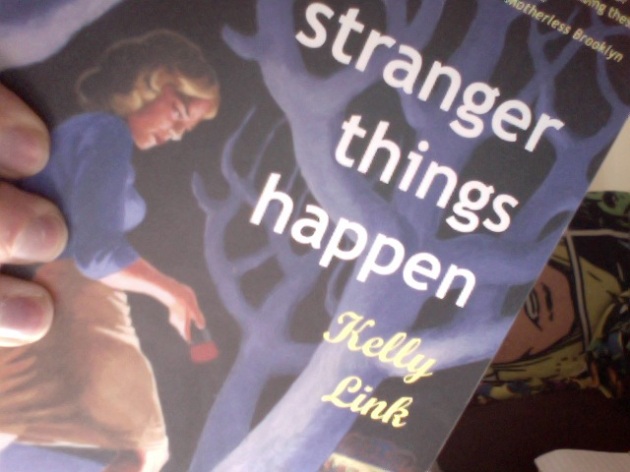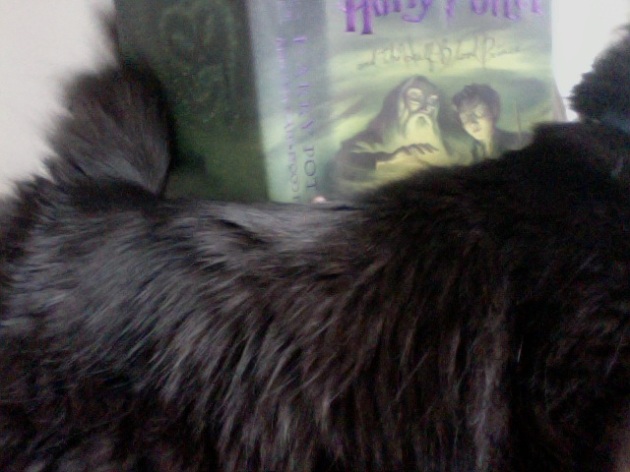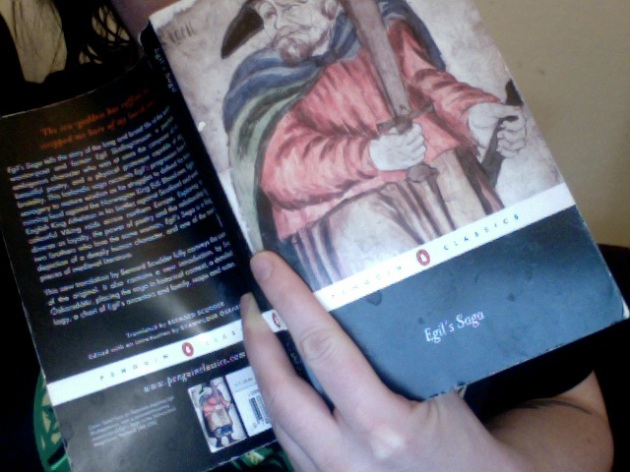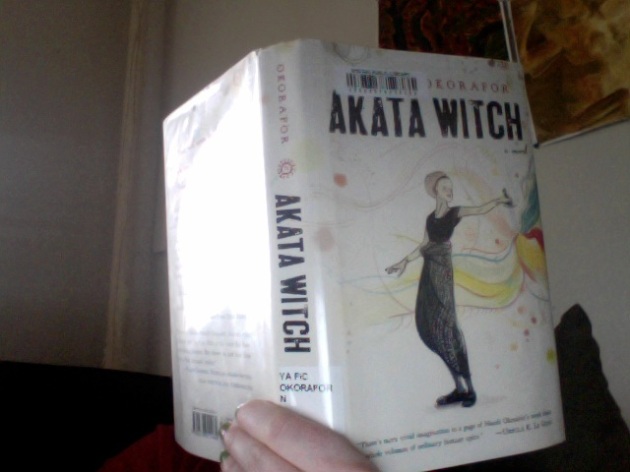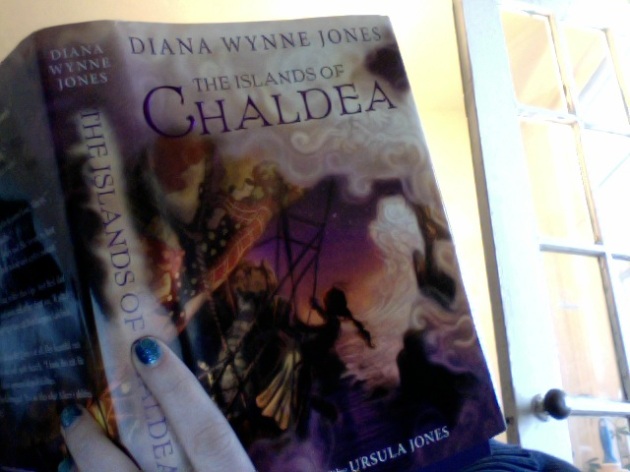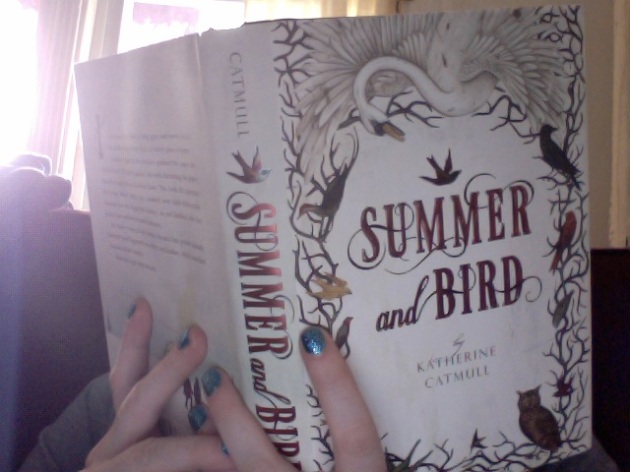Harry Potter and the Order of the Phoenix by J.K. Rowling. Reread/audiobook by Stephen Fry: 870/870.
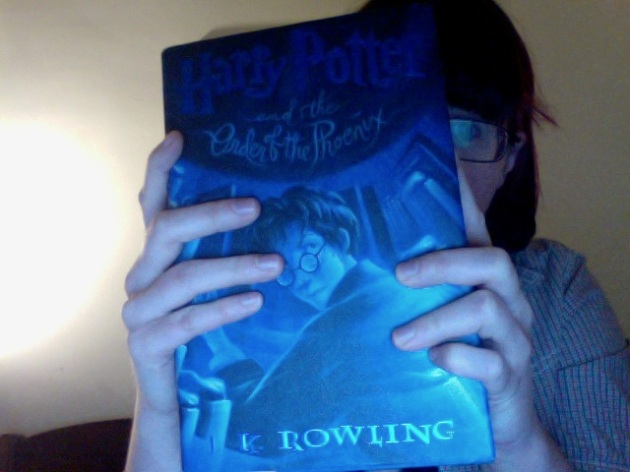
THIS IS WHAT I PROMISED, TO PUT ALL THE REST OF THIS GIANT BOOK INTO ONE FINAL ATTACK POST. PLEASE PLACE YOUR FAITH IN ME!!
GRAWP. Okay, I’m sorry, this post is starting off with chapter GRAWP, which is just–listen, we’ve been here. Let’s make it short: Grawp is a violent savage with a “misshapen” face and what sounds like the Nordic version of natural hair, but maybe being brought to civilization and taught English will cure him. NO NO! Giants will never be “fit to mix with humans” ghghghghghghsdhghh and then we get some great stuff about centaurs where Hagrid thinks the forest is his and that the centaurs (who live there) are greedy, selfish, and stupid, and then calls them mules. In sum: fantasy racism. Fantasy racism. I’m so tired. Fantasy racism. He’s just a centaur, he’s not two things literally stuffed together. I’m so, so tired.
O.W.L.S. In partaking of the fantasy racism Hermione and Harry miss Ron being actually good at quidditch, but he goes totally out of character and takes it in stride–growing as a person??–and then also reacts well to the revelation that Harry basically bought the twins their joke shop. Then Ron and everyone else are never happy again, as they must sit Wizard A-Levels, which are the most realistic thing that has happened in the last three thousand pages. McGonagall makes them promise not to fail just to spite Umbridge, and the examiners upset Umbridge by liking ole Dumbledore. At this point I developed a desire to take exams like a dog has the desire to befriend or possibly eat a cat that demonstrably wants to kill it. EXAMS. Oh, your lost, sweet mystery.
BUT THINGS GO TERRIBLY. In the middle of their Astronomy exam, Hagrid is accosted by government officials who shoot McGonagall into a coma as Hagrid flees the country. THEY ARE NOT AFTER THAT EVEN GIVEN EXTRA TIME FOR THE EXAM. And then everything just goes horribly wrong, because poor perfect Harry has a vision of Sirius being tortured in the Department of Mysteries, and he hasn’t understood enough of the occlumency to think it could really be fake, and he thinks one of his only friends is dying and if he does, it will be Harry’s fault.
Out of the Fire. I’m going to admit RIGHT HERE AND NOW: Sirius’s death scene still didn’t work for me. Not at all. I will get to why, but what does work for me starts here: Harry absolutely believes what he’s being shown, and Harry absolutely is more truly good than he is ego, and the idea of someone taking his credulity and twisting it into the worst possible thing–that makes me so, so angry. I know Harry is the hero, but I want so much to just take him out of there and DESTROY EVERYONE WHO DOES BAD THINGS TO HIM–his relations, Snape, Voldemort, and Dumbledore, the other powerful old wizard who shamelessly manipulates all of Harry’s greatest virtues to his own ends.
Right now–the other thing that works in this book–it’s not about the terrible adults you can’t trust, but the friends you can. It’s a perfect Gryffindor moment for Hermione, who doesn’t even think the vision is real and at a decisive moment sets aside her certainty and puts her loyalty to Harry ahead of it. Luna and Ginny and Neville really haven’t gotten to prove themselves like this way, and it hints at a fullness of character that makes your heart ache. In a really marvelous scene, they get past Umbridge (who by now is willing to resort to torturing children in the name of Cornelius Fudge) and her pack of Slytherins, and if you are not 100% in love with Hermione Granger by the time she’s lured Umbridge to the Forbidden Forest on a pack of lies, I DO NOT KNOW WHAT YOUR HEART IS FOR.
Fight and Flight. Of course Hermione’s plan is cringeworthy–namely, rile the centaurs into attacking her. And here Rowling makes a grand attempt at putting herself on the side of right–Umbridge gets called out as racist! She tries to tie one up! The centaurs hate being used! THEY CARRY HER OFF INTO THE WOODS TO DO–SOMETHING BAD? SOMETHING BAD. THEY ARE NOT PRETTY TALKING HORSES! It is extremely satisfying to the reader! This bit is meant to show that Rowling is not racist, except it gets erased by Grawp barreling through full of arrows, trying to murder everything that moves and Harry hopes he murders all the centaurs, WELP, as they say, y o u t r i e d. They fly away on magical death horses.
The Department of Mysteries. Thestrals are clearly really good flyers because even in England it shouldn’t be this easy to get across the country before someone has time to get a bubble off a shelf. The kids arrive at the guest entrance to the Ministry of Magic and uh–tell it exactly what they’re doing, which is an amazing solution I personally would not have come up with. (Neither did the movie director, as I remember.)
–Okay, here’s an aside, so placed because this is when I thought of it–but how weird is it that being magical is inherent to you and is like…your identity…but for the most part you need a wand to do it? Like, yeah, you need paints to paint, but YOU ARE NOT LITERALLY THE PAINT POT, as it were, and it seems like with magic you kind of are. I mean, kind of. One ASSUMES? But it’s not really clear where power is coming from, in the Wizarding World. Internal? Ambient? The only real rules for how magic works seem to be linguistic, which can’t even be universal. FEEL FREE TO SHARE YOUR THOUGHTS ON THIS.
Anyway. They get to the Department Mysteries, which is one of the most atmospheric–well, no. Possibly one of Rowling’s greatest abilities as a writer is in her settings. Every place has a feeling, like a total, solid, could-walk-right-in feeling. The Department of Mysteries feels cold and terrible, echoing, vast, and like it’s sucking you down and down. Like it’s always on the edge of catching you and destroying you. That’s before any of the bad stuff happens. They find a vat of brains and they find the Veil–and it’s really surprising Harry doesn’t kill himself accidentally right there–and the stacks stuffed with prophecies. They don’t find Sirius.
Beyond the Veil. Well, then death eaters arrive and hurt all the perfect children and I get MORE AND MORE UPSET. THEY ARE BRAVE THEY ARE PERFECT THEY ARE BRAVE AND PERFECT. There are all these foolish things going on–like Harry says “Voldemort” and all the Death Eaters sort of freak out and hiss at each other and their eyes dart and they get so generally British about dark lord etiquette that you almost forget one of them is inexplicably Russian. Except then everything gets bad. Legitimately upsetting. One of the Death Eaters–who remembers this? I did not remember this TERRIBLE THING–gets his head stuck in a bell jar of time and it keeps growing old and shrinking young, and then he’s wandering around the hall with a screaming baby head, it is literally a nightmare.
And she hurts her kids. This turns out to be something I have a really hard time with. The books have never been violent in quite this way before, but suddenly Neville’s nose is broken and Hermione won’t wake up, and Ginny can’t walk, and they’re being attacked by brains, which is much more horrible than it even should be, and Ron is giggling and stupid and his mouth is bleeding and he doesn’t understand what’s going on. And Harry doesn’t know what to do, and it’s his fault they’re there.
This is when the grown-ups arrive–the Order and Dumbledore. And before they actually fix anything, Sirius dies. And it just–doesn’t work for me.
Sirius’s death, before we knew it was him, was the biggest talking point of book five. I know I spent the whole book terrified about who it would be, and there were so many sharp, violent, awful moments that made me think this is it. But Sirius’s actual death turned all of those crucial, excruciating moments into red herrings. It tried to take the horror and the fear of a horrible, fearsome scene–listen, when you set brains and death eaters and curses and baby-headed murderers on a bunch of brave children, you’ve done it. You’ve built up a perfect pitch. My heart is with you all the way.
But Rowling wrote all of that and then gave the crucial moment to someone else. She builds up all the emotion around the kids, and then forcibly points the reader towards someone else–someone who had a lot of potential but who had barely been able to develop his character, or even more than a shallow, worrying version of what could have been his relationship with Harry. I’m riveted, watching the kids, begging them to be okay, furious at what’s happening, and Rowling says HANG ON I NEED YOU TO WATCH THIS SLOW-MOTION SHOT OF A GUY OVER HERE FALLING THROUGH A CURTAIN. It’s an abrupt about-face of emotional focus, a sudden bloodless vanishing, while all around them, children are bleeding and falling down and going wrong. It’s not a moment of a style that would work for me necessarily ever, but what precedes it matters immensely, and the quiet in Sirius’s death requires you to take your attention off of everyone else in an instant when you’re not ready.
Maybe if she had at least thought to make Harry realize that he had essentially made the lie come true, it could have worked. But she didn’t, and to me his death is not only divorced from the emotional arc of the scene, but it completely undermines all of Sirius’s importance and development as a character.
The Only One He Ever Feared. Give it to Rowling, her chapter titles in this book are KILLER. Take it from Jim Dale, ALERT TO EVERYONE, JIM DALE’S BELLATRIX HAS A FRENCH ACCENT, IT IS AN ABOMINATION. Okay. So. There’s a really really long part where things are happening in the Department of Mysteries, lots of shrieking French Bellatrix and coolly threatening Dumbledore, and then DUMBLEDORE FIGHTS VOLDEMORT AND VOLDEMORT TRANSFORMS INTO HARRY’S SCAR AND I DO NOT UNDERSTAND HOW ANYONE THOUGHT HE WAS NOT A HORCRUX, WHY DID WE NEED TO CONVERSE, EVEN? Postscript: “Harry felt the creature use him again” is an EXTREMELY UPSETTING SENTENCE.
The Lost Prophecy. In this chapter Dumbledore thinks Harry’s state of shock and grief is a great opportunity to act like a complete trash pile. He is calm and optimistic and superior and also goes on a lot about how Sirius was racist against House Elves (NO, JKR, THAT IS YOU. IT’S JUST YOU.) which are some things he could maybe NOT do right now. He says that he and Harry are ~closer than headmaster and pupil~ WHICH HAS NEVER BEEN SAID IN A REAL LIFE CONTEXT THAT IS NOT REALLY CREEPY AND EXPLOITATIVE. Oh, and then he straight up admits that he knew Harry would be abused with the Dursleys but ANCIENT MOTHER BLOOD MAGIC was the only way to keep him safe. OH, ALAS IT WAS HARD FOR DUMBLEDORE, OH, HE CARED TOO MUCH. AH, THE SUFFERING OF HIM. Literally sheds a tear at the end. Can’t wait for you to die, Dumbledore. Can’t. Wait.
The Second War Begins. The degree to which Draco and Harry hate each other now that Lucius is in Azkaban is very attractive, for people, you know, other people, who are into their horrific interpersonal dynamic. The degree to which JKR thinks it’s okay to mutilate people as long as you are a Gryffindor is mind-boggling. The good thing is that after FIVE YEARS, some grown-ups have finally decided to do something about the fact that Harry’s family is always trying to kill him. GREAT.
THAT’S THAT.
(See you in Half-Blood Prince.)

